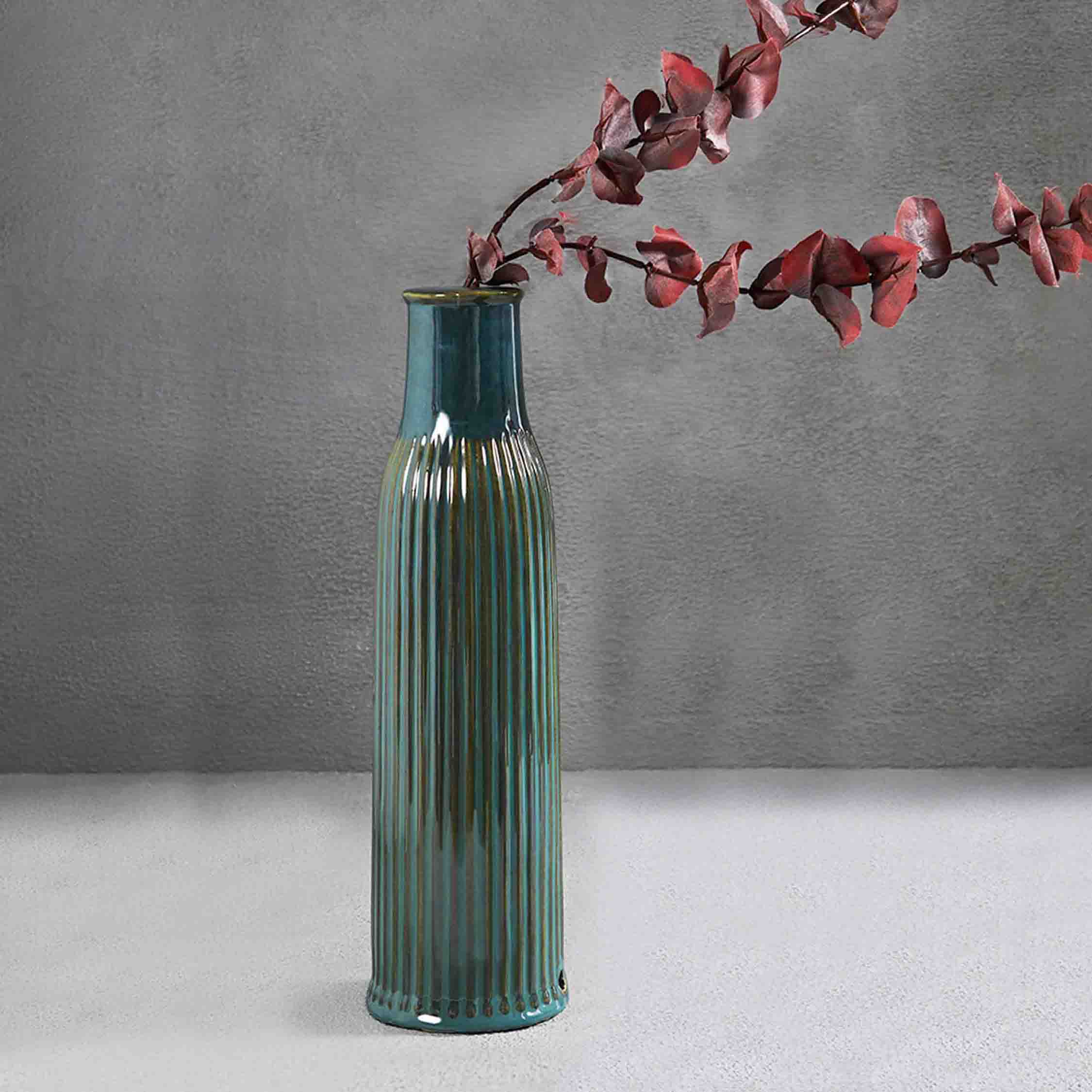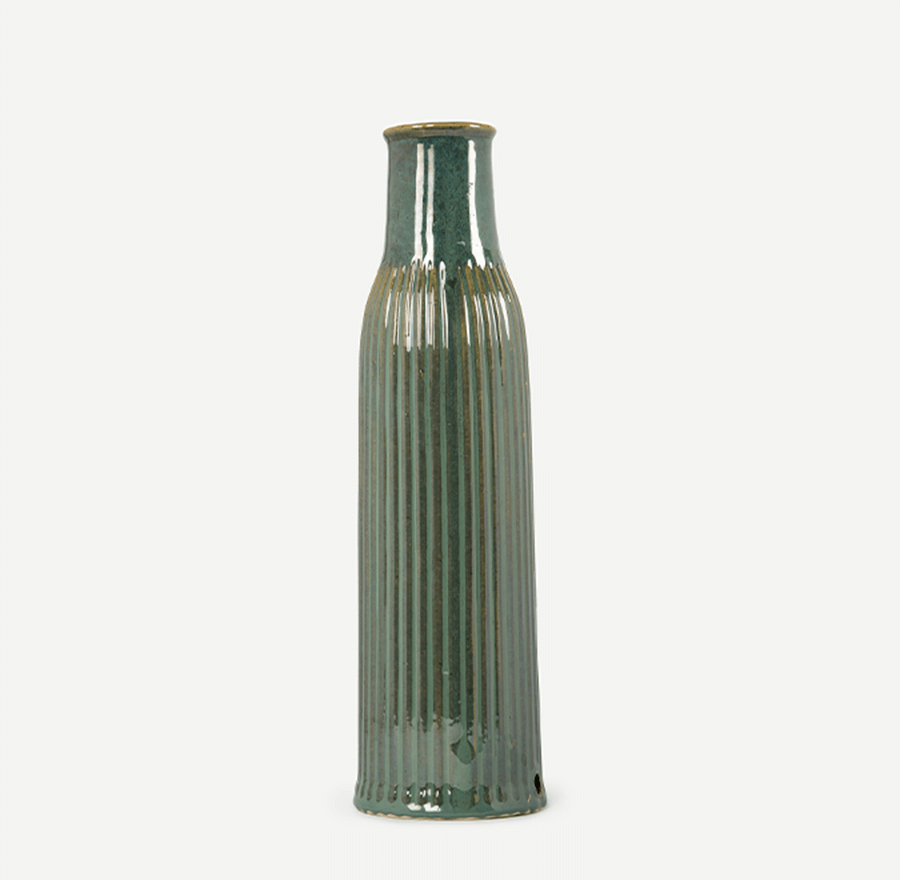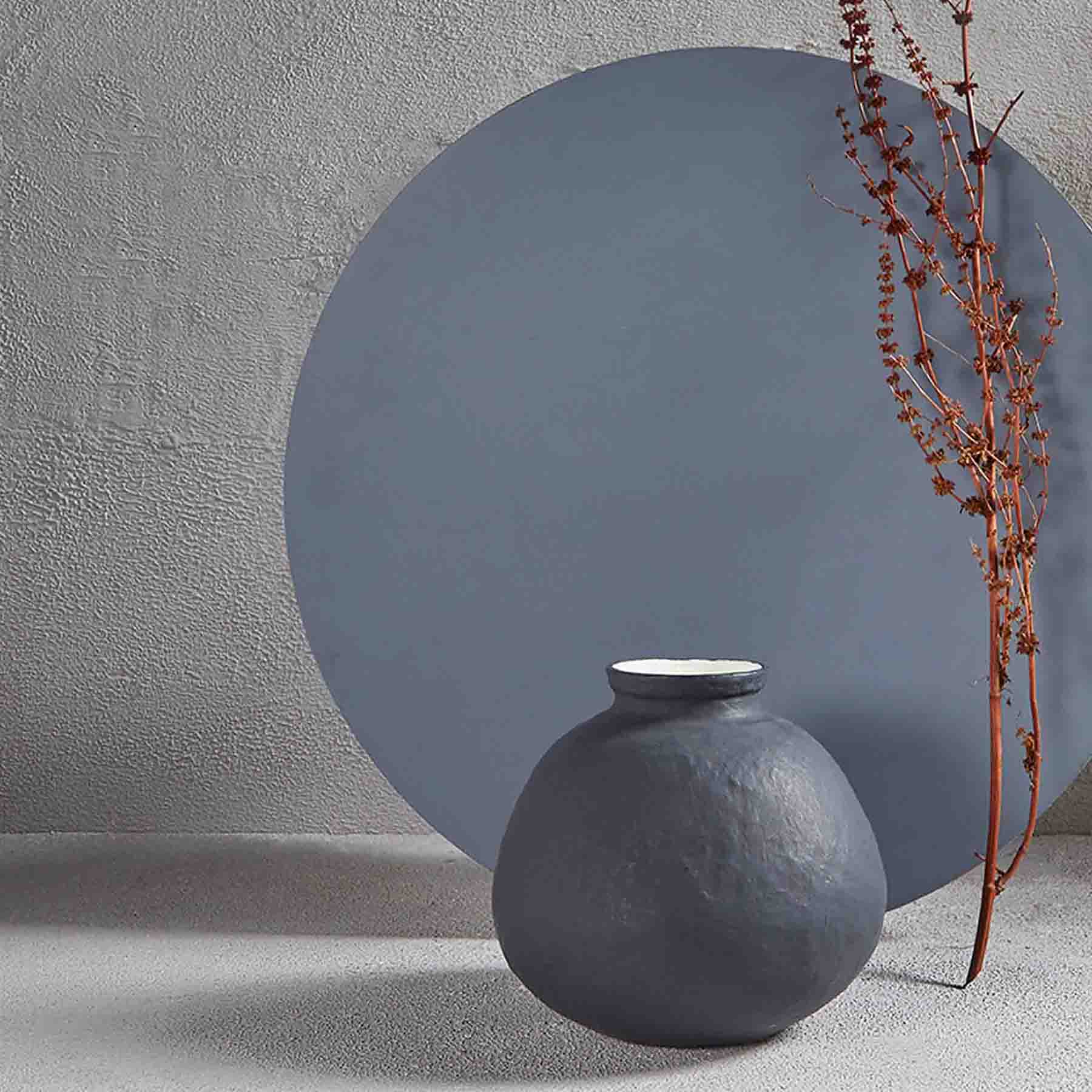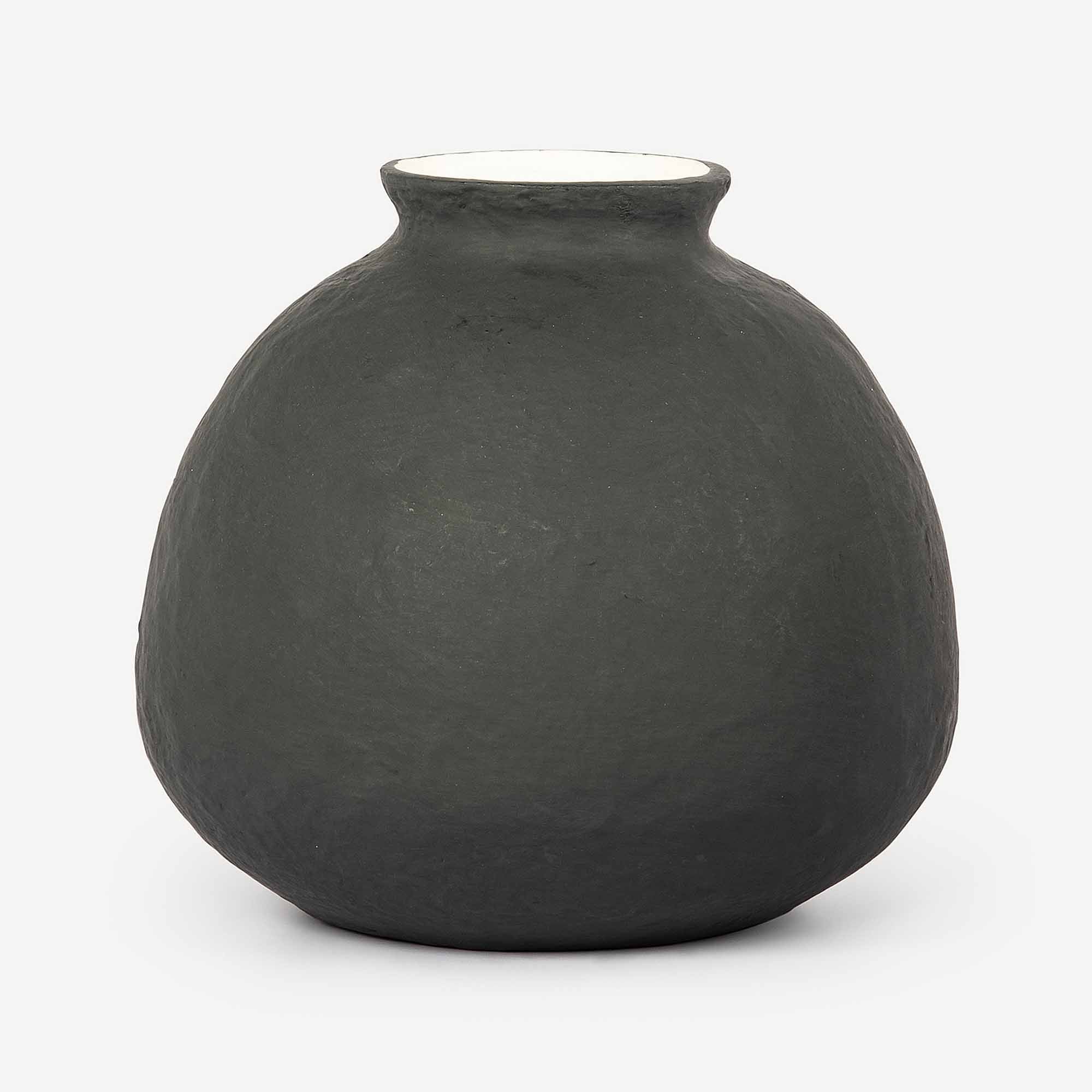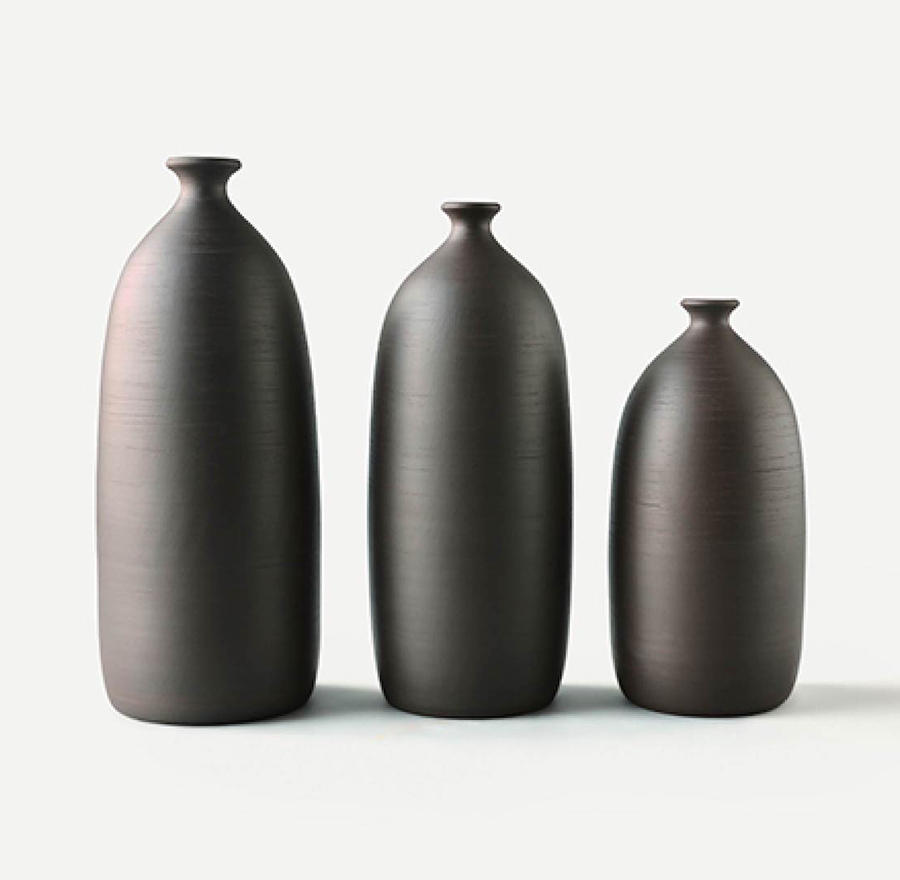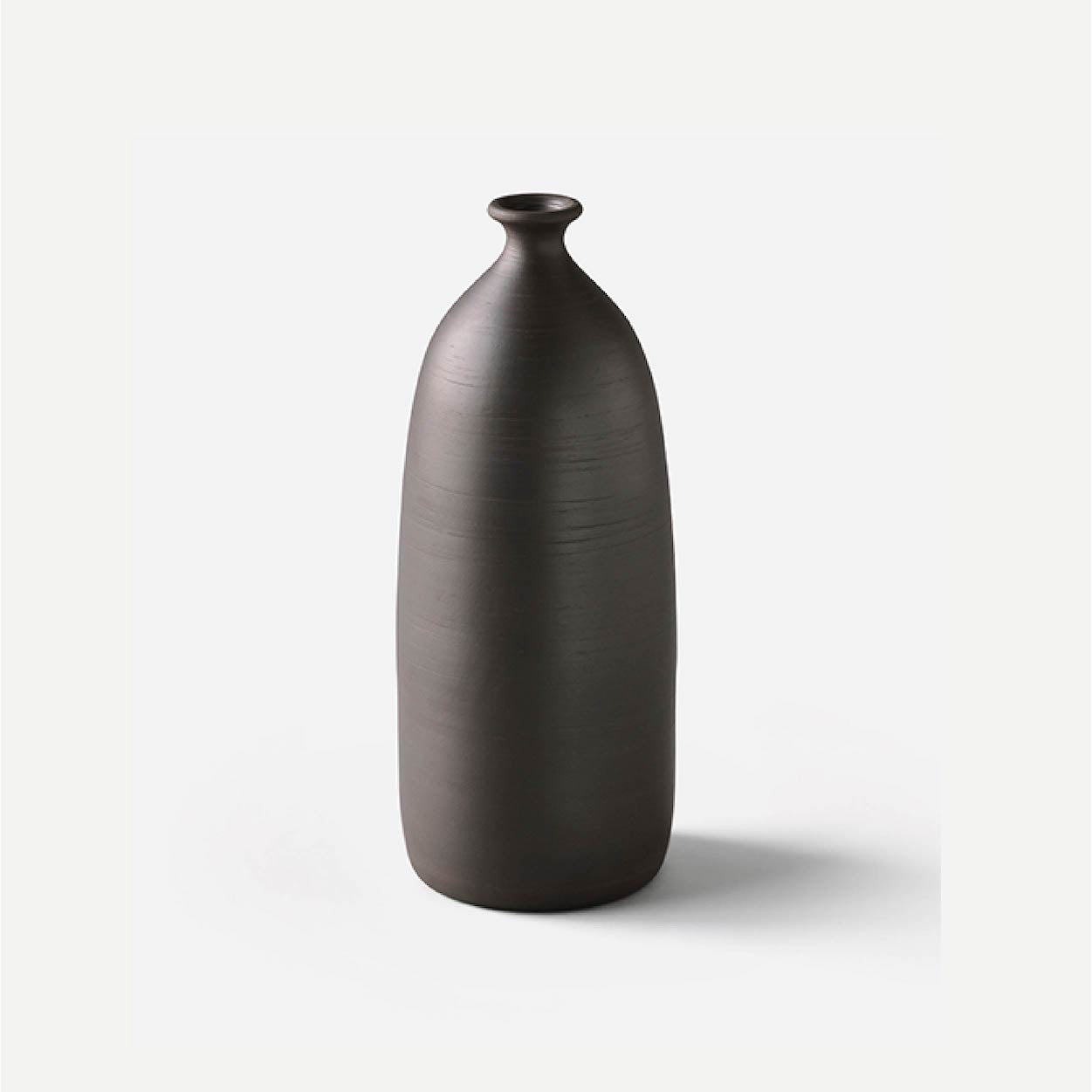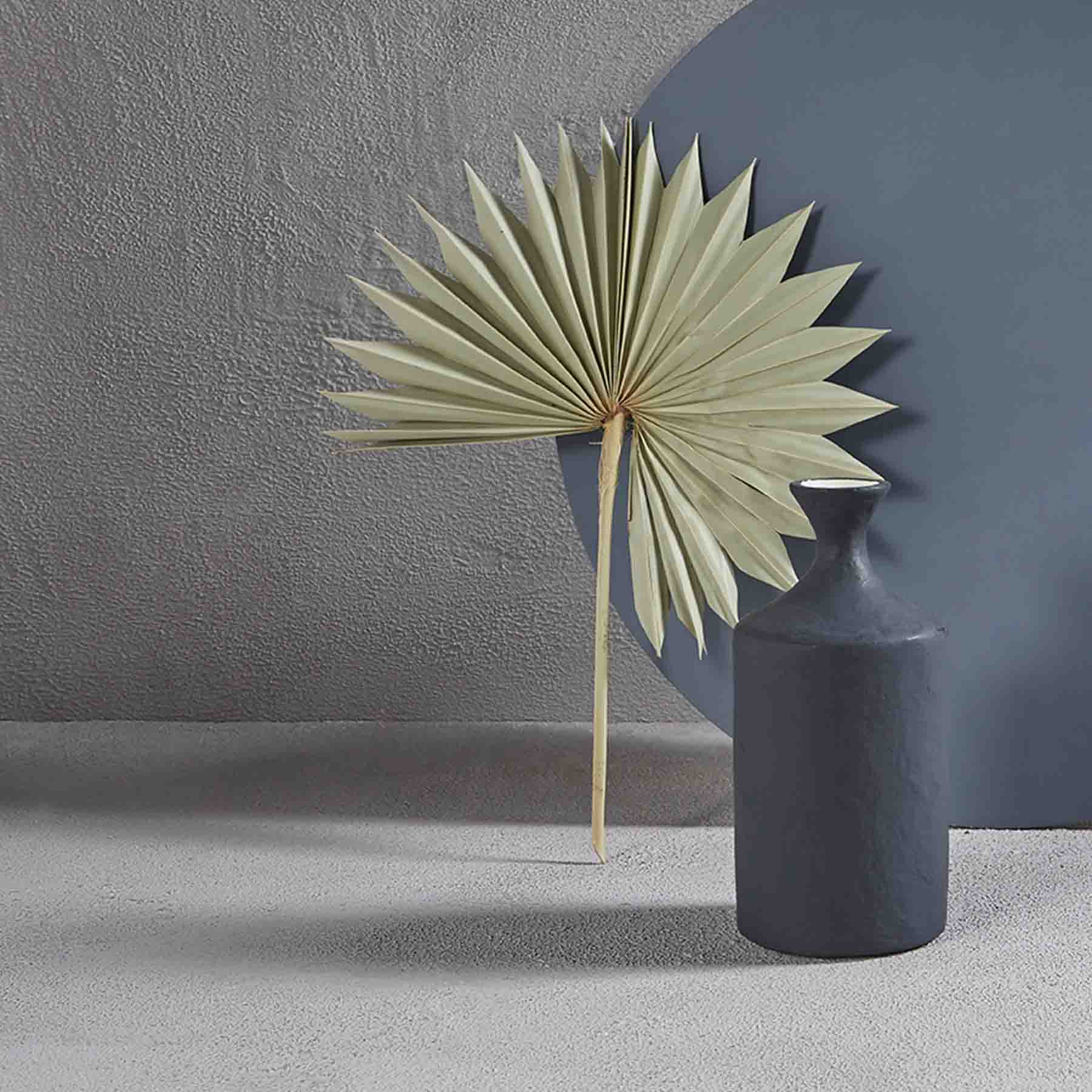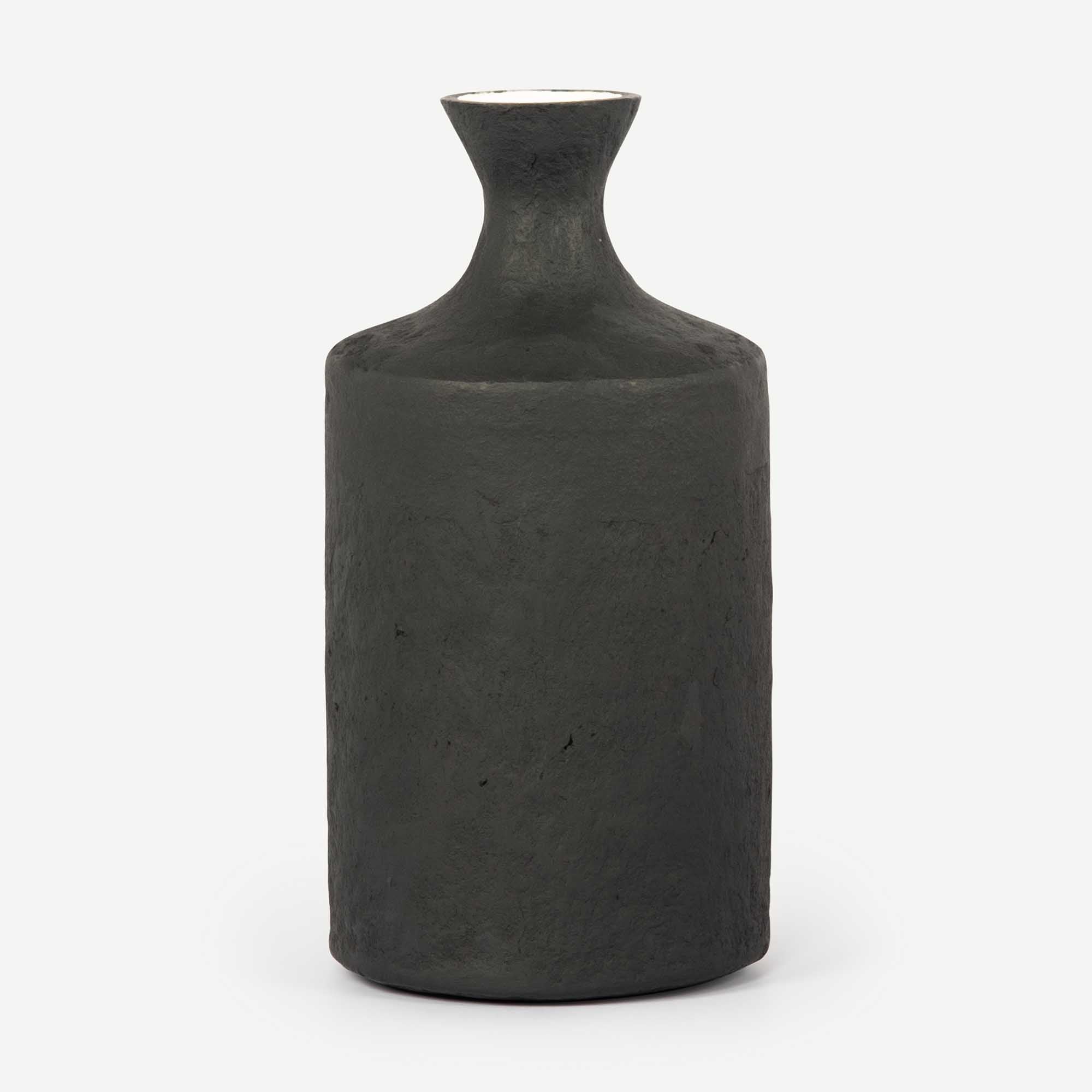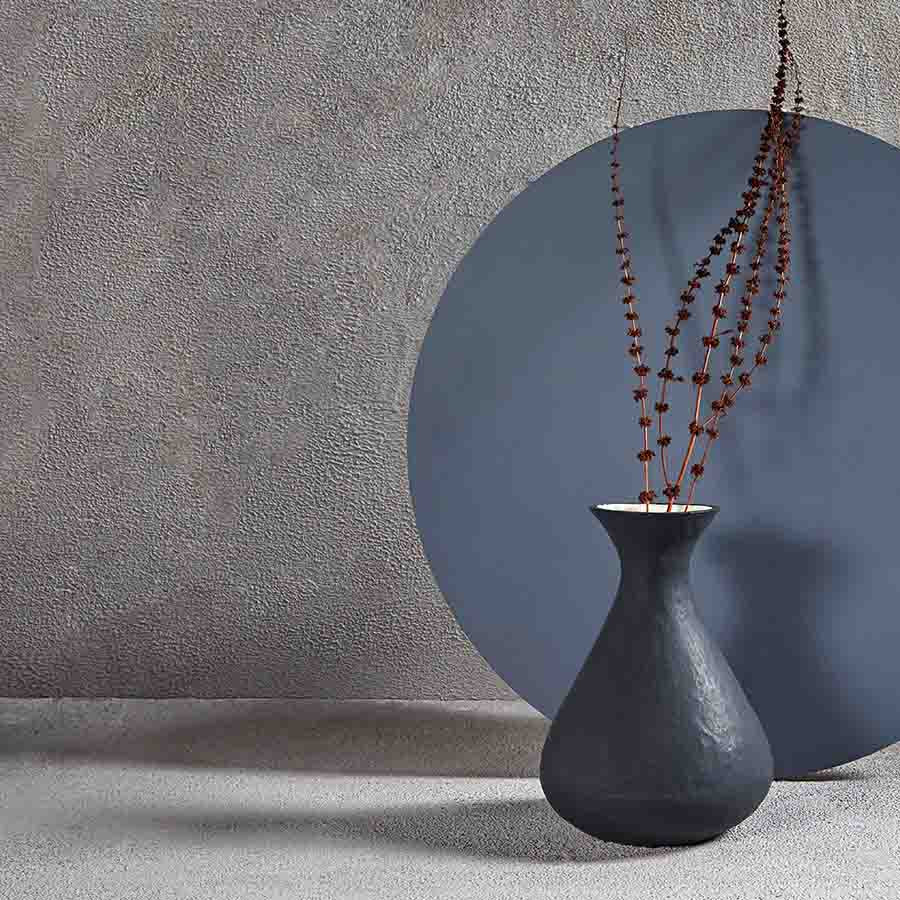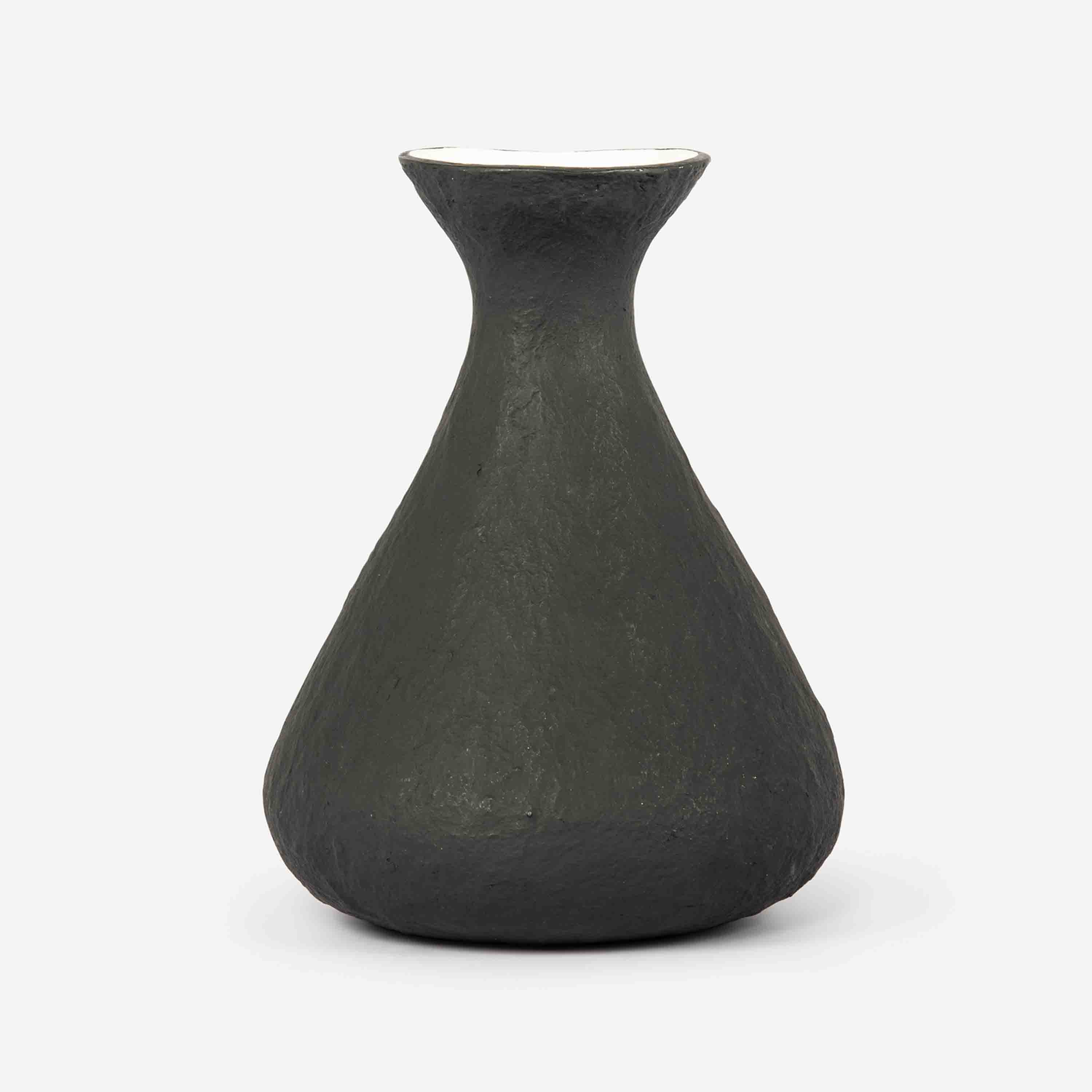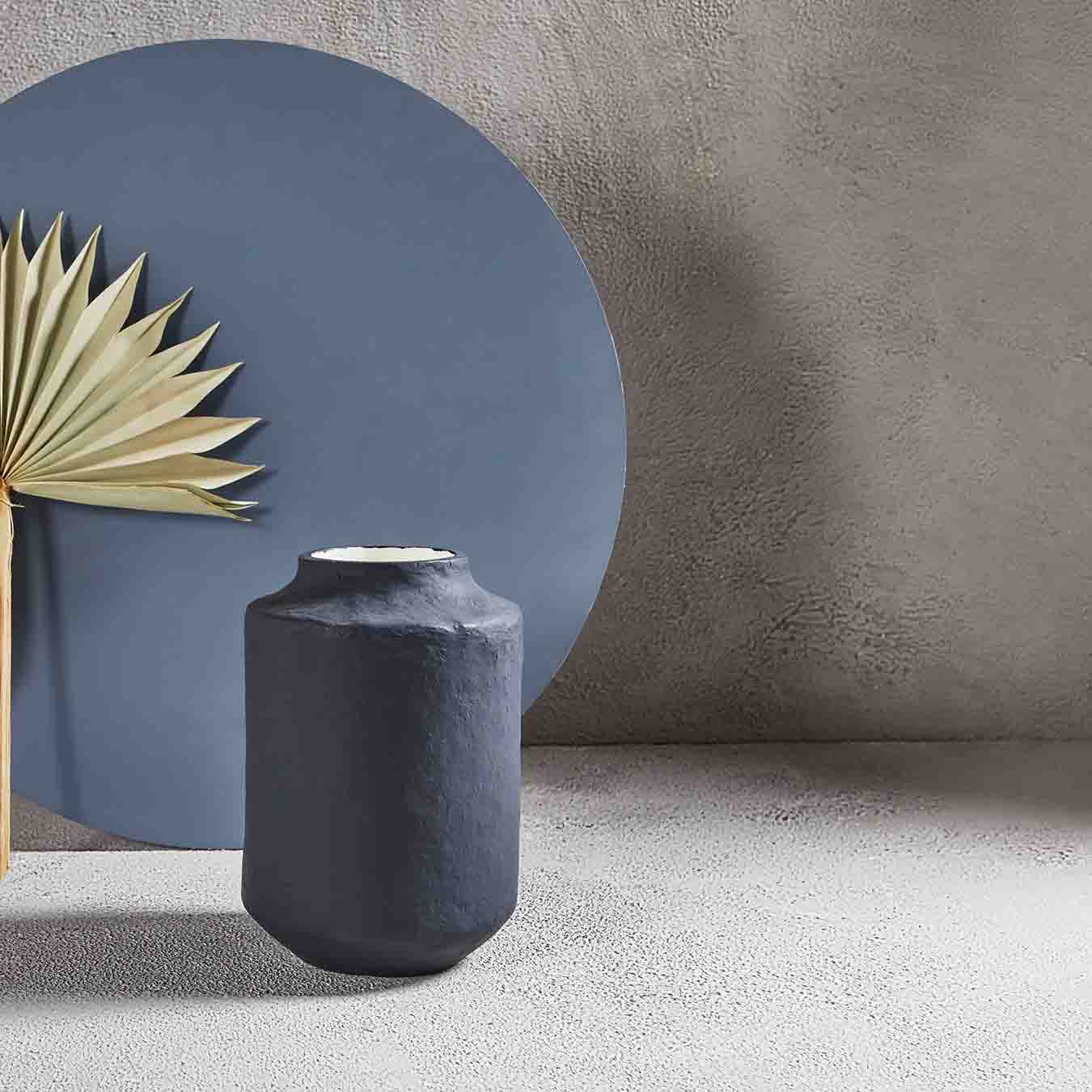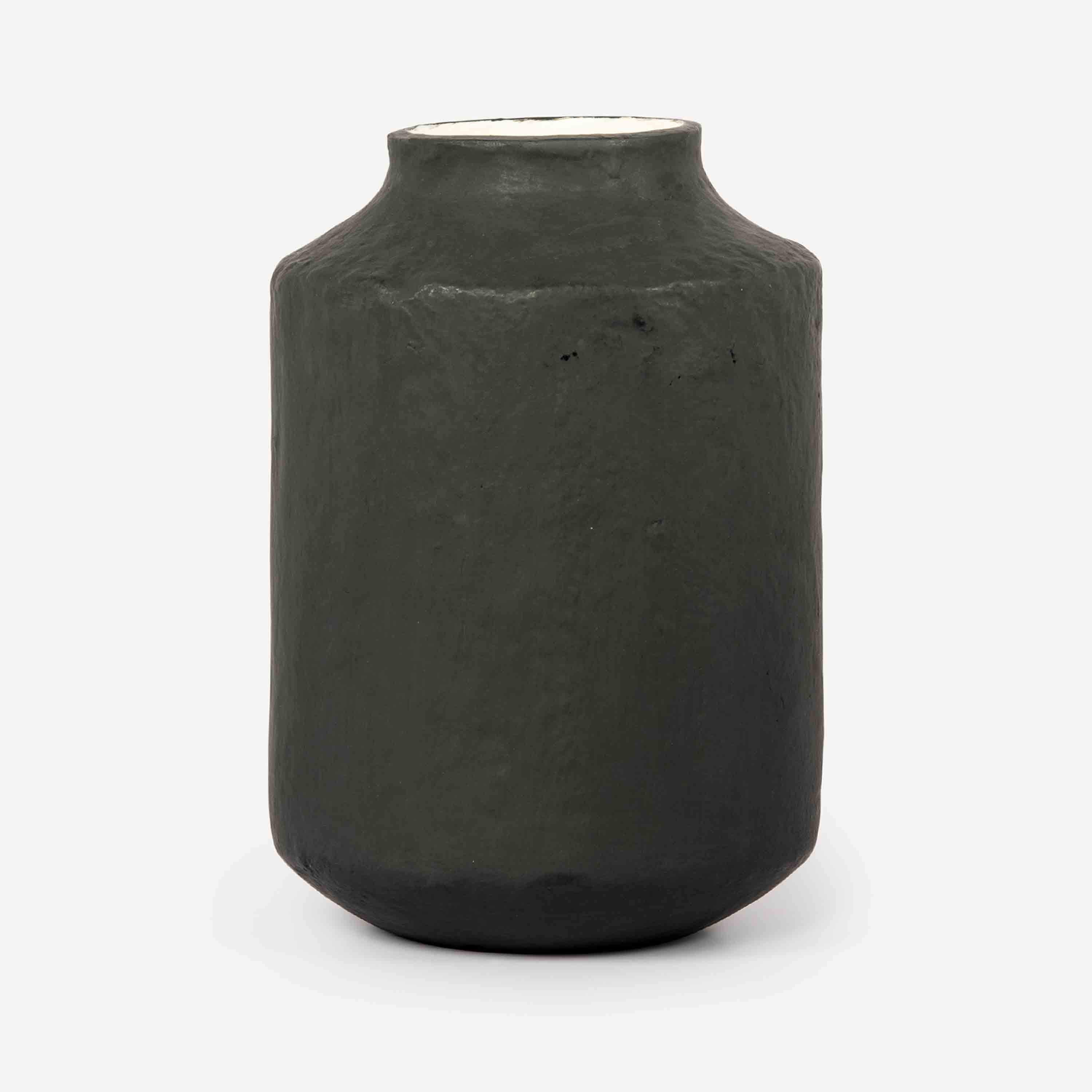KORA FORMS
Bring warmth to any space with this vase set
Bring warmth to any space with this vase set
Craft Type: Studio Pottery
Elevate your space with this exquisite handcrafted vase set, where the ancient art of Raku firing meets the warmth of earthy hues. This collection showcases a delicate interplay of textures and finishes.
Each piece is hand-thrown and fired, resulting in one-of-a-kind crackles for the raku vase and organic surface textures. Whether styled together or displayed individually, this set harmonizes tradition with modern sophistication, making it an ideal choice for collectors and design connoisseurs.
This product is made to order and shipping and taxes will be additional.
Made in: Uttar Pradesh
Material: Stoneware
Dimensions (cm): Small: 16.5(L) x 16.5(B) x 14(H), Large: 17.8(L) x 17.8(B) x 10.2(H)
Dimensions (inches): Small: 6.5(L) x 6.5(B) x 5.5(H), Large: 7(L) x 7(B) x 4(H)
Weight: Small: 505 grams, Large: 765 grams
No. of pieces in a set: 2, Set of Two Decorative Objects
Clay, a natural material, is used to make ceramic wares. It is kneaded and then thrown on a pottery wheel, where it is shaped by hand into this product. The clay product then goes through the process of bisque firing, glaze application, drying, and then glaze firing to make the final ceramic product.
Pottery in the Indian subcontinent has a long history — it has existed as a craft form for centuries. Evidence of earthenware has been found in the early settlements of Lahuradewa and later during the Indus Valley Civilization. Recent times have seen pottery taking on modern design sensibilities, aided by artists and potters that are breathing new life into the craft form. Studio pottery in India is said to have been started by Rabindranath Tagore in Shantiniketan, West Bengal. It further branched out into two styles, which developed in Delhi under Gurcharan Singh and in Pondicherry under Ray Meeker’s Golden Bridge Pottery.
Manufactured at: Agra, Uttar Pradesh
- Usage guide: Use for decorative purpose
Cleaning guide:
DO:
- Use only dry cloth to remove dust
- Keep away from water
DON’T:
- Use wet cloth or chemicals to remove dust.
- Description
- Process & Craft
- Care
Craft Type: Studio Pottery
Elevate your space with this exquisite handcrafted vase set, where the ancient art of Raku firing meets the warmth of earthy hues. This collection showcases a delicate interplay of textures and finishes.
Each piece is hand-thrown and fired, resulting in one-of-a-kind crackles for the raku vase and organic surface textures. Whether styled together or displayed individually, this set harmonizes tradition with modern sophistication, making it an ideal choice for collectors and design connoisseurs.
This product is made to order and shipping and taxes will be additional.
Made in: Uttar Pradesh
Material: Stoneware
Dimensions (cm): Small: 16.5(L) x 16.5(B) x 14(H), Large: 17.8(L) x 17.8(B) x 10.2(H)
Dimensions (inches): Small: 6.5(L) x 6.5(B) x 5.5(H), Large: 7(L) x 7(B) x 4(H)
Weight: Small: 505 grams, Large: 765 grams
No. of pieces in a set: 2, Set of Two Decorative Objects
Clay, a natural material, is used to make ceramic wares. It is kneaded and then thrown on a pottery wheel, where it is shaped by hand into this product. The clay product then goes through the process of bisque firing, glaze application, drying, and then glaze firing to make the final ceramic product.
Pottery in the Indian subcontinent has a long history — it has existed as a craft form for centuries. Evidence of earthenware has been found in the early settlements of Lahuradewa and later during the Indus Valley Civilization. Recent times have seen pottery taking on modern design sensibilities, aided by artists and potters that are breathing new life into the craft form. Studio pottery in India is said to have been started by Rabindranath Tagore in Shantiniketan, West Bengal. It further branched out into two styles, which developed in Delhi under Gurcharan Singh and in Pondicherry under Ray Meeker’s Golden Bridge Pottery.
Manufactured at: Agra, Uttar Pradesh
- Usage guide: Use for decorative purpose
Cleaning guide:
DO:
- Use only dry cloth to remove dust
- Keep away from water
DON’T:
- Use wet cloth or chemicals to remove dust.








